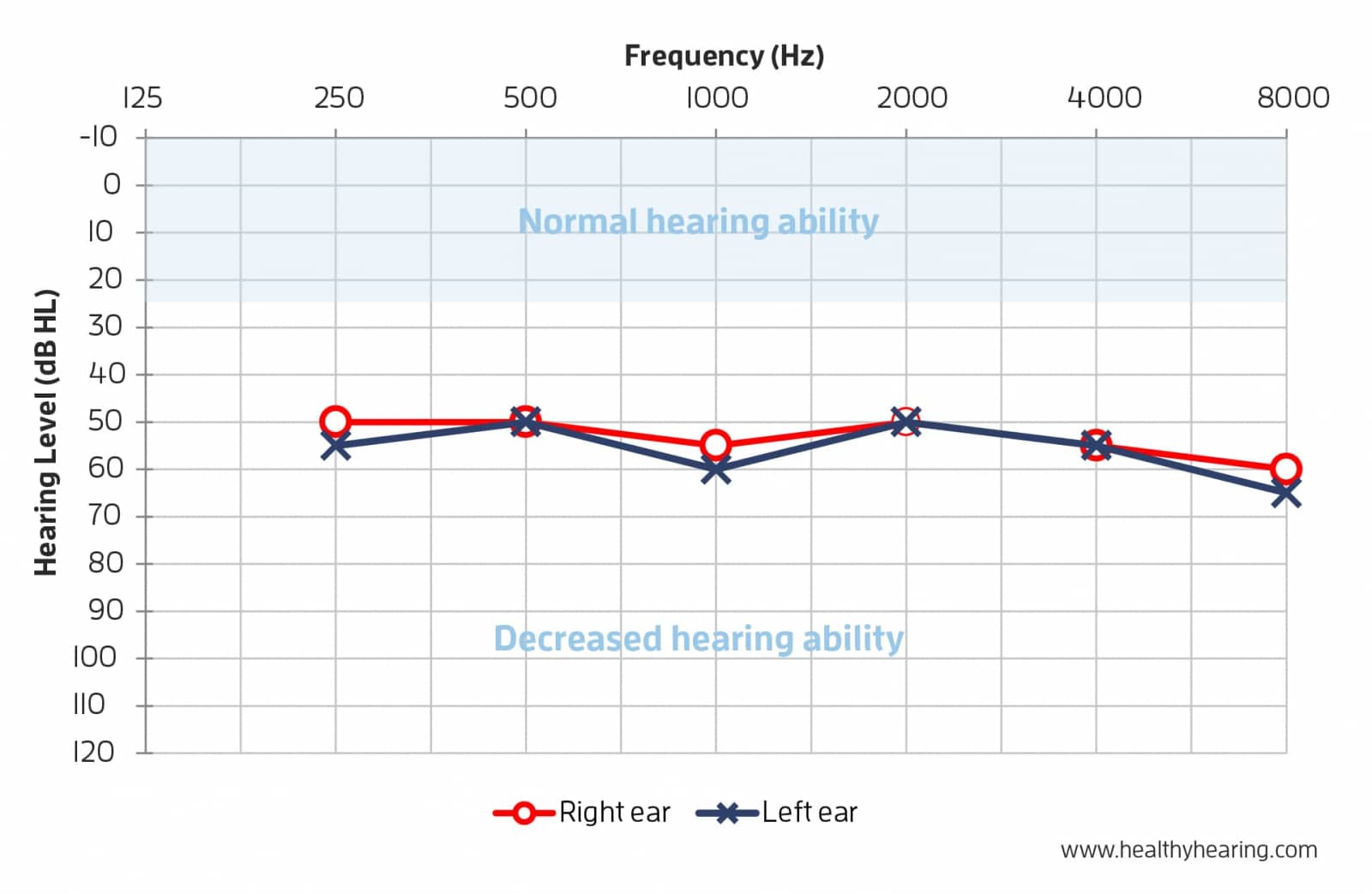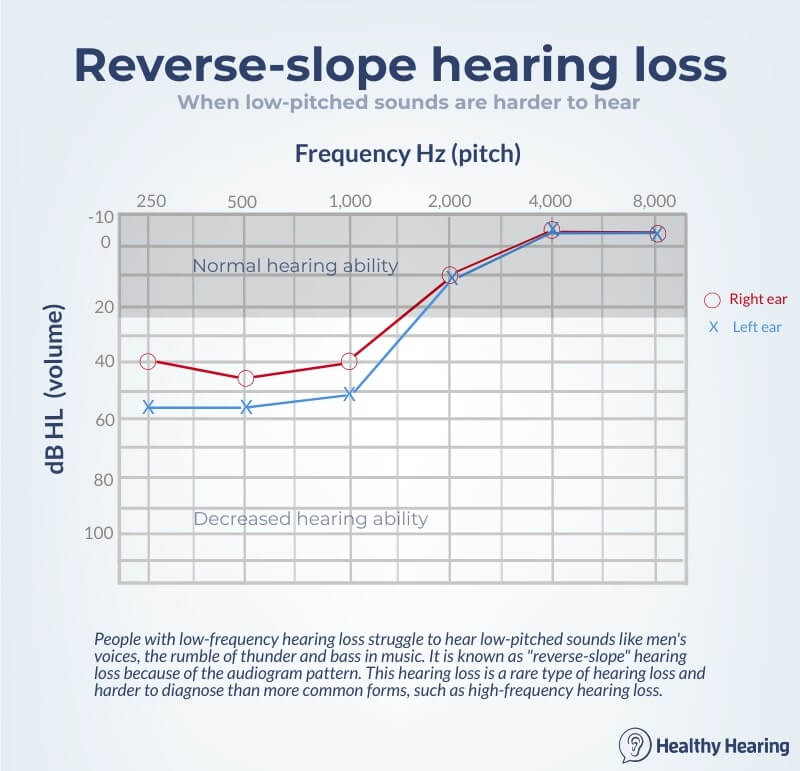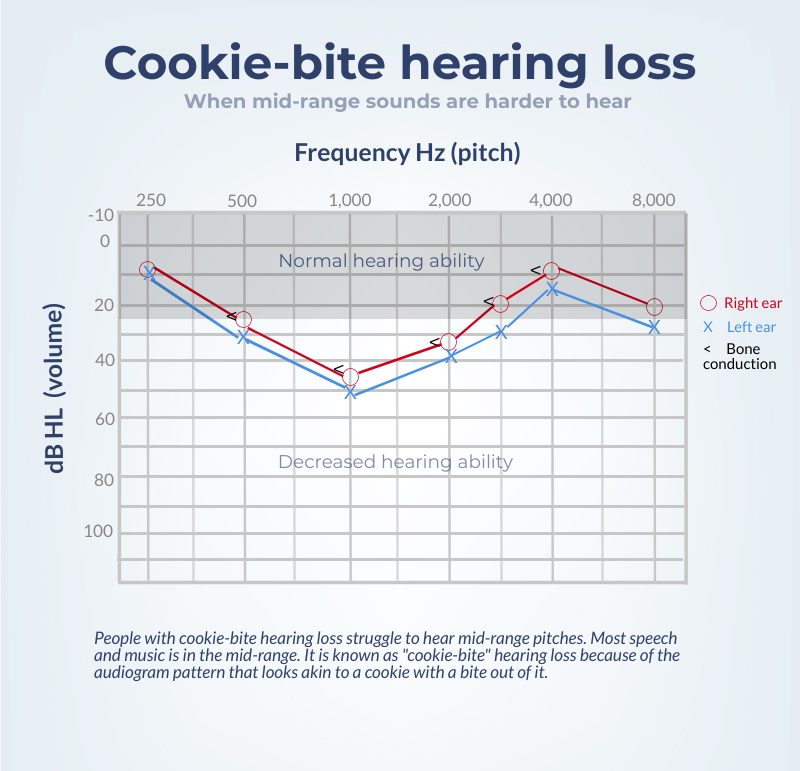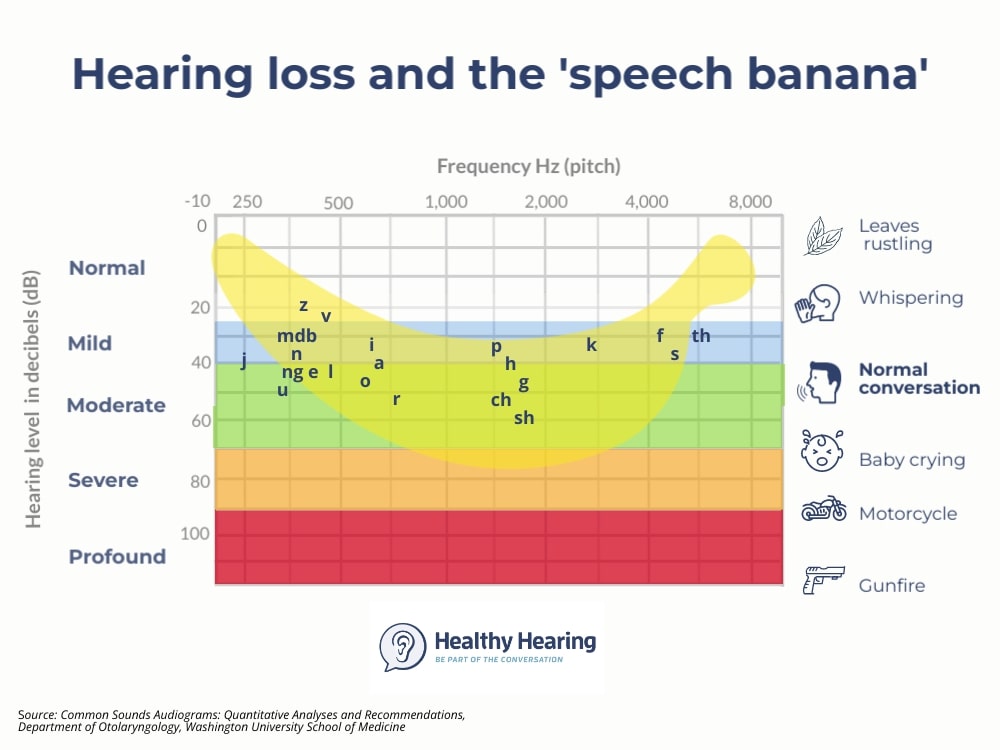|
www.HealthyHearing.com |
Understanding your audiogram resultsHow to read a hearing test
Contributed by Mandy Mroz, AuD, Former President, Healthy Hearing An audiogram is a graph that displays the results of your hearing test. Initially, it might look like a bunch of indecipherable lines and symbols. But once you learn how to read and interpret your audiogram, you will better understand your hearing loss. Even more importantly, your hearing care professional will use the results to help determine the best type of hearing aid for you. This page explores:
An audiogram measures your hearing abilityThe goal of audiometric testing is to measure your hearing ability across a range of frequencies in each ear independently. This testing produces a chart called an audiogram. Hearing threshholdThe audiogram plots your hearing thresholds across various frequencies, or pitches, in a quiet listening environment. A hearing threshold is defined as the softest sound you are able to detect about 50 percent of the time. So don't be surprised if you feel like you "missed" some of the beeps. An important thing to remember is that the audiogram is quantitative, not qualitative. It uses a specific numerical system to measure residual hearing ability in quiet rooms; it doesn't subjectively describe the quality of your hearing ability. How to read an audiogram
Looking at the audiogram graph, you will see two axes: The horizontal axis (x-axis) represents frequency (pitch) from lowest to highest. The vertical axis (y-axis) of the audiogram represents the intensity (loudness) of sound. As a reference point, a person with normal hearing will be able to hear very quiet sounds across all pitches, such as humming, leaves rustling, a faucet dripping, and birds chirping in the distance. What do the symbols on an audiogram mean?There are several different symbols used to indicate thresholds on an audiogram, depending on the specific testing conditions. Air conductionTesting with headphones is called air conduction testing because the sound must travel through the empty space of the ear canal to reach the inner ear.
Each symbol on the chart represents your threshold for a given frequency. In the example above, the individual's threshold for 2000 Hz was 50 dB in each ear. Once all of the thresholds are measured and plotted on the graph, they are connected to form easy-to-read lines for the left and right ears. If the two lines are essentially overlapping, your hearing loss is considered symmetrical, or the same in both ears. If the lines are not overlapping your hearing loss is considered asymmetrical, meaning your ears have differing degrees of hearing loss. Bone conduction testingDuring this test, a device is placed behind the ear in order to transmit sound through the vibration of the mastoid bone. It is marked with a “[“ or a “<” symbol. Bone conduction testing is used to detect conductive hearing loss, when there may be a physical obstruction or other problem physically blocking sound from entering the ear. This is different from the more common type of hearing loss, sensorineural, which means a problem with the sensory or nerve cells. What is normal hearing on an audiogram?Adults: Looking at the above audiogram, normal hearing ability for adults is represented in the blue shaded area above the 25-dB line that crosses the graph from left to right. Children: Because children have more sensitive hearing, a child is considered to have normal hearing ability if their hearing test indicates they can hear sounds as soft as 0 to 15 dB across the frequency range. Note that audiograms are not a good way to measure hidden hearing loss or auditory processing disorder. These hearing loss conditions originate in the brain, not the ear. For either condition, you may be told your audiogram is normal but you may still struggle to make sense of sound. Classifying the degree of hearing lossYour hearing care professional will classify the severity of your hearing loss, or degree of hearing loss, by where the symbols fall on the graph. Hearing loss is often classified as slight, mild, moderate, moderate-to-severe, severe or profound. They will also describe the pattern of your loss, generally as flat, sloping or rising. The space between the normal hearing area and your threshold symbols represents all of the sounds you’re missing because of your hearing loss. The bigger the space, the more sounds you’re not hearing.
When are hearing aids recommended?Even mild hearing loss can cause a loss in speech clarity, leading to communication difficulties. For this reason, hearing aids are often recommended for any degree of hearing loss. The good news? Your hearing care provider can adjust the amplification specific to your audiogram. Examples of audiograms for different hearing loss typesHearing loss is highly unique. Audiogram results can vary widely and reveal different types of hearing loss. For example, this audiogram indicates a type of hearing loss that makes it harder to hear low-pitched sounds:
And this audiogram reveals "cookie bite" hearing loss, in which middle pitches are harder to hear:
Some audiograms may show a "speech banana" pattern on them, used to indicate where the volume and pitch of speech sounds occur. This helps your hearing specialist know which speech sounds will be harder for you to hear.
Why does my audiogram have more symbols and abbreviations on it?The examples we've included here are simplified to make them easier to understand. Your audiogram may include a lot more information, such as:
More: Hearing loss glossary After your visit to a hearing center, they should provide you with a report of your visit. If not included with the report, request a copy of your audiometric test results. Not only will these results serve as a prescription for you, but it will serve as a baseline for you and your hearing care professional to monitor any changes in your hearing down the road. Find a hearing care provider near youIf you have been struggling to hear or have noticed a ringing in your ears, use our directory to find a hearing center near you. Then take it a step further and learn how to read your audiogram. This will enable you to be an active participant in your hearing health care and to make informed decisions about your treatment options. Mandy Mroz, AuD, Former President, Healthy Hearing
|
Featured clinics near me
Hearing Health Solutions from Ohio ENT - Columbus
974 Bethel Rd Ste B
Columbus, OH 43214
Earzlink Hearing Care - Reynoldsburg
7668 Slate Ridge Blvd
Reynoldsburg, OH 43068

Find a clinic
We have more hearing clinic reviews than any other site!



.jpg)



 Dr. Mandy Mroz earned her doctorate in audiology from the University of Florida. Mandy’s career is guided by her dedication to serving people with hearing loss and her past experience in hearing research, training and management.
Dr. Mandy Mroz earned her doctorate in audiology from the University of Florida. Mandy’s career is guided by her dedication to serving people with hearing loss and her past experience in hearing research, training and management.